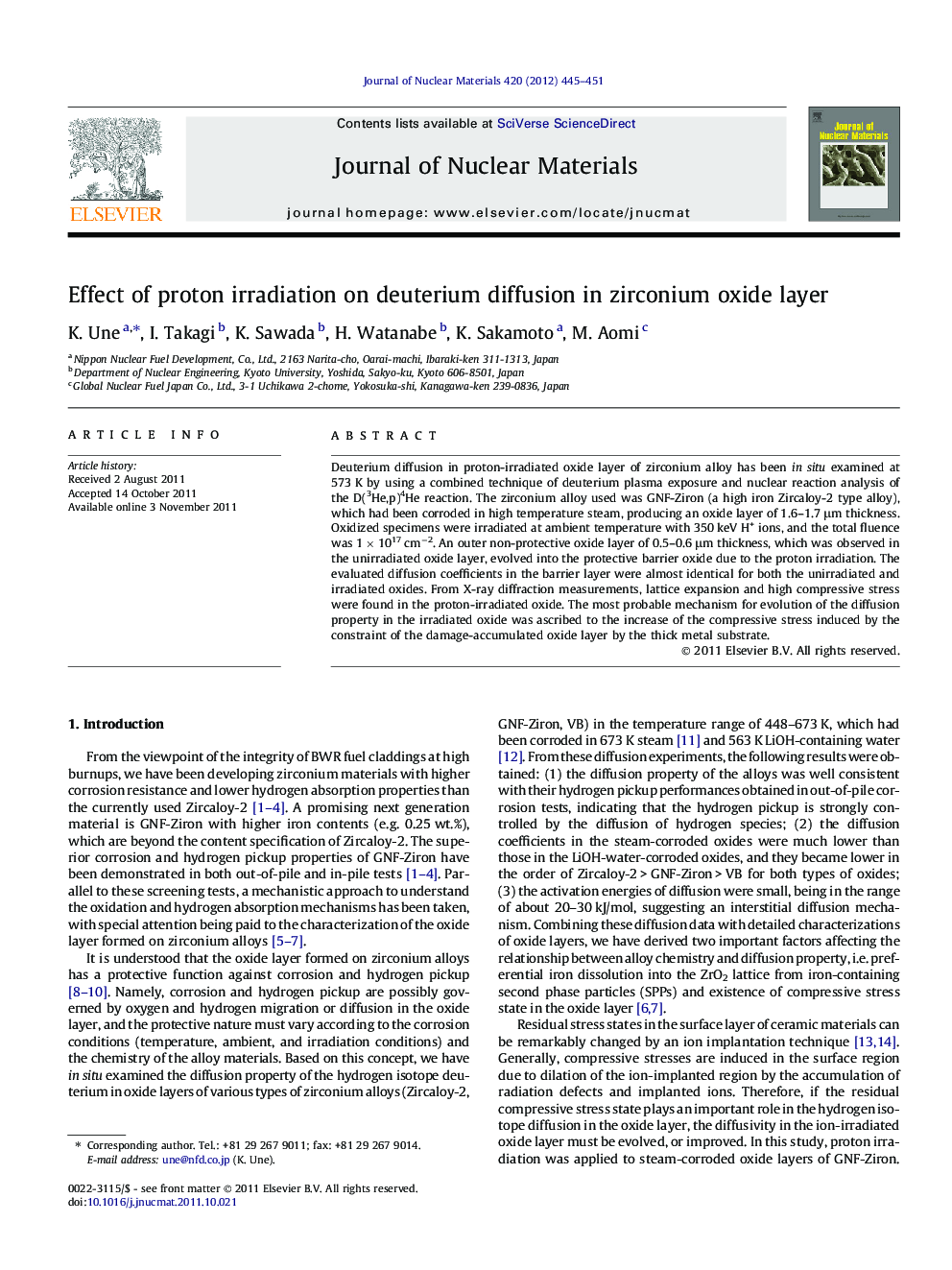| Article ID | Journal | Published Year | Pages | File Type |
|---|---|---|---|---|
| 1566491 | Journal of Nuclear Materials | 2012 | 7 Pages |
Deuterium diffusion in proton-irradiated oxide layer of zirconium alloy has been insitu examined at 573 K by using a combined technique of deuterium plasma exposure and nuclear reaction analysis of the D(3He,p)4He reaction. The zirconium alloy used was GNF-Ziron (a high iron Zircaloy-2 type alloy), which had been corroded in high temperature steam, producing an oxide layer of 1.6–1.7 μm thickness. Oxidized specimens were irradiated at ambient temperature with 350 keV H+ ions, and the total fluence was 1 × 1017 cm−2. An outer non-protective oxide layer of 0.5–0.6 μm thickness, which was observed in the unirradiated oxide layer, evolved into the protective barrier oxide due to the proton irradiation. The evaluated diffusion coefficients in the barrier layer were almost identical for both the unirradiated and irradiated oxides. From X-ray diffraction measurements, lattice expansion and high compressive stress were found in the proton-irradiated oxide. The most probable mechanism for evolution of the diffusion property in the irradiated oxide was ascribed to the increase of the compressive stress induced by the constraint of the damage-accumulated oxide layer by the thick metal substrate.
► We examine in situ deuterium diffusion in proton-irradiated oxide layer of zirconium alloy. ► Proton irradiation evolves diffusion property in outside oxide from non-protective to protective. ► XRD and microstructure examinations support compressive stress hypothesis for the mechanism.
